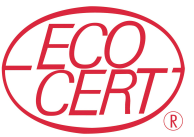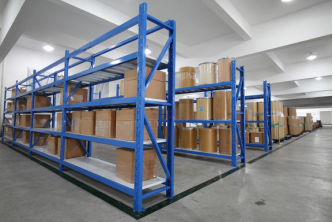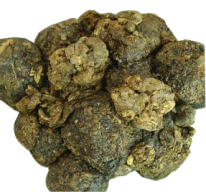Top Quality Organic Propolis powder Factory for Iceland
Top Quality Organic Propolis powder Factory for Iceland Detail:
[Products Name] Propolis powder, Propolis extract powder
[Specification]
Propolis content 60%,70%,80%
Water-soluble propolis powder 60%,70%,80%
[Gerneral feature]
1. Low antibiotics
2. Low PAHs, can approve to 76/769/EEC/German:LMBG;
3.Organic certified by ECOCERT, according to EOS & NOP organic standard;
4.Pure natural propolis;
5.High content of flavones;
6.Anti-block;
7. Manufacturer supply.


[Packaging]
1. 5kg/aluminum foil bag, 25kgs/carton.
[How to get it]
First, we collect raw propolis from beehives, then extract by low temperature with ethanol. Filter and concentrate, we get the pure propolis block at 98%. Then Low temperature crushing, adding edible and medicinal excipients, finally we get propolis powder.
[Introduction]
Propolis comes from the substance like natural resin, which is collected by the bees from exudates of plants branches and bud the chemical substances of Propolis are found to be various, such as beeswax, resin, incense lipids, aromatic oil, fat-soluble oils, pollen and other organic matter. Studies have shown that the source of propolis resin in material has three types: bees collected plants secreted fluid, secretion in vivo metabolism of bee, and involvement in the process of forming the material.
We can supply Propolis Extract with food-grade and medicine-grade .The raw materiall is came from non-polluting food grade propolis .Propolis extract was made of high-grade propolis. It maintains the propolis effective ingredients during the procedure of extraction under constant low temperature , taking off the useless substances and sterilization.
[Function]
Propolis is a natural product processed by bees mixed with glutinous and its secretion.
Propolis contains more than 20 kinds of useful flavonoids, rich vitamins, enzymes, amino acids and other microelements, etc. Propolis is called “purple gold” owing to its valued nutrients.
Propolis can remove free radical, lower blood sugar and blood fat, soften blood vessels, improve micro-circulation, enhance immunity, anti-bacteria and anti-cancer.
Product detail pictures:

Related Product Guide:
The key to our success is "Good Products Good quality, Reasonable Value and Efficient Service" for Top Quality Organic Propolis powder Factory for Iceland , The product will supply to all over the world, such as: Oman, Nepal, Portugal, We would very much welcome an opportunity to do business with you and have pleasure in attaching further details of our products. Excellent quality, competitive prices,punctual delivery and dependable service can be guaranteed.
Why wait Order now :
https://myrainoffice.com/enroll/self_enroll_pc.php?sponsor=125969
Information :
www.rainsoul2u.com
call & delivery +6013-373 0101
https://www.myrainlife.com/johnnylee
https://www.facebook.com/rainsoul2u
What is Rain Soul ?
Rain Soul Powerful Antioxidants & Essential Fatty Acids to energize, revitalize, detoxify your mind, body & soul. Black cumin seed, Black raspberry seed, Grape seed, Ribose-D, Resveratrol.
富 含 抗 氧 化, 人 体 内 必 需 脂 肪 酸, 帮 助 人 脑 和 身 体 排 毒. 古 书 记 载 黑 小 茴 香 除 了 无 法 起 死 回 生, 种 籽 可 做 为 每 种 疾 病 的 治 疗 药 物.
Dr Otto Heinrich Warburg (Germany)
Nobel Prize in Medicine 1931 : Biochemist
The body requires special fats that, among other important functions. make it possible for sufficient oxygen to reach the cells via the cellular membranes. Which are the key, These special fats are highly oxygen-absorbing. Called Essential Fatty Acids, or EFAs, these special fats must be supplied from outside the body every day.
Black raspberry seed :
Contain antioxidant-like phytonutrients including ellagitannins and anthocyanins. These may help fight viruses, inflammation, and a number of other serious health conditions. Antioxidants seek out and eliminate cell-damaging substances, called free radicals. Free radicals can occur naturally in the body or from exposure to environmental toxins. Although ellagitannins exist in most berries, raspberries contain the the most potent levels.
Black raspberry seed :
Contain antioxidant-like phytonutrients including ellagitannins and anthocyanins. These may help fight viruses, inflammation, and a number of other serious health conditions. Antioxidants seek out and eliminate cell-damaging substances, called free radicals. Free radicals can occur naturally in the body or from exposure to environmental toxins. Although ellagitannins exist in most berries, raspberries contain the the most potent levels.
Grape seed :
Grape seeds have an abundant source of flavonoids called proanthocyanidins. This is important for brain health due to their free radical-quenching antioxidant and collagen-protecting effects. Proanthocyanidins have also been shown to noticeably delay the onset of lipid peroxidation and to effectively chelate iron ions. Free iron ions are some of the most powerful promoters of lipid peroxide, hydrogen peroxide and hydroxyl radical production. This is a major contributor to the pathogenesis of Parkinsons disease, one of the most common neurological diseases in older individuals.
Ribose-D :
Ribose-D is a five-carbon sugar found in every cell in our bodies that combines with oxygen and ATP (adenosine triphoshate) to give energy to each cell. Ribose is also present in RNA (ribonucleic acid), which is one of the main information carriers of living organisms. Oxidative stress, as measured by free radical damage to cells, leads to systematic inflammation. Fortunately, our bodies handle this problem daily. However, if our bodies experience an abnormal increase in free radicals due to exercise, daily stress, excess smoking, excess saturated fat intake, depressed immune system, aging, etc., the body becomes fatigued and less efficient in producing Ribose-D to replenish cellular energy. Because of this, we need to supplement with Ribose-D in order to regenerate the cells energy system.
Grape Extracts Resveratrol :
Grape skin extract contains trans-resveratrol which is considered a natural antibiotic that can fight bacterial diseases. Resveratrol may help protect the body from various diseases and slowing down the aging process.
BUY NOW RAIN SOUL :
Rain International . rain soul Asia . rain soul North America . rain soul Canada . rain soul United States . rain soul USA . rain soul Europe . rain soul Germany . rain soul United Kingdom . rain soul Croatia . rain soul Hungary . rain soul Romania . rain soul Serbia . rain soul Slovakia . rain soul Asia . rain soul China . rain soul Hong Kong . rain soul Indonesia . rain soul Japan . rain soul Malaysia . rain soul Philippines . rain soul Singapore . rain soul Brunei . rain soul Taiwan . rain soul Thailand . rain soul Shanghai
BUY NOW RAIN CORE :
Rain International . rain core Asia . rain core North America . rain core Canada . rain core United States . rain core USA . rain core Europe . rain core Germany . rain core United Kingdom . rain core Croatia . rain core Hungary . rain core Romania . rain core Serbia . rain core Slovakia . rain core Asia . rain core China . rain core Hong Kong . rain core Indonesia . rain core Japan . rain core Malaysia . rain core Philippines . rain core Singapore . rain core Brunei . rain core Taiwan . rain core Thailand . rain core Shanghai
How to order rain soul . how to buy rain soul . buy rain soul . rain nutrition . rain soul how to buy . be a rain soul distributor .
God is Good & Great…!!!
Jesus Bless You & Love You…!!!
GET SOME AT THIS LINK
https://alternativemedicinesolution.com/Oxymatrine
Benefits and logistics of oxymatrine for Hepatitis C viral load control.
Here’s Some Studies in writing
https://lloydwright.org/messages/hepatitis/tags/oxymatrine
Matrine and oxymatrine are the two major alkaloid components found in sophora roots. They are obtained primarily from Sophora japonica (kushen), but also from Sophora subprostrata (shandougen), and from the above ground portion of Sophora alopecuroides. The matrines were first isolated and identified in 1958; they are unique tetracyclo-quinolizindine alkaloids (see Figure 1) found only in Sophora species thus far. An intensive investigation into the pharmacology and clinical applications of these alkaloids has gone on for the past decade and remains one of the focal points of Chinese medical research. The main clinical applications are treatment of people with cancer, viral hepatitis, cardiac diseases (such as viral myocarditis), and skin diseases (such as psoriasis and eczema).
The crude herb and crude hot-water extracts of sophora have been available in the West for more than 25 years. An alkaloid fraction of sophora roots containing a standardized level of oxymatrine and matrine (20%) was first introduced by the Institute for Traditional Medicine, and made available to practitioners in tablet form under the name Oxymatrine (White Tiger) in 1998. It has been used without reported side effects. In China, the alkaloids are often given by injection, but this method of administration is not acceptable in the West, so oral dosing is used here instead. When taken orally, much of the oxymatrine is converted to matrine; to get high blood levels of oxymatrine, it must be given by injection. However, it is unclear whether oxymatrine is clinically more effective than matrine. Chinese researchers have also used the alkaloids in capsule form, with results that appear similar to the injection. Sophora is also administered in complex formulas made as decoctions and taken orally.
Sophora japonica contains about a dozen alkaloids, with matrine and oxymatrine being by far the highest, together comprising about 2% of the dried root stock (most of it in the form of oxymatrine), followed by closely related alkaloids: mainly sophocarpine, but also minute amounts of sophoranol, sophoramine, sophoridine, allomatrine, isomatrine, and others (see Figure 2). These alkaloids were first reported as constituents of kushen in a series of publications from 1958-1978.
An overview of recent research on the pharmacology and clinical applications of the sophora alkaloids is presented below. In general, the dosage of the sophora alkaloids administered clinically is in the range of 400-600 mg per day.
VIRAL HEPATITIS
As described by Chen Yanxi and his colleagues at the Shanghai Second Medical University (1):
In recent years, oxymatrine has been recommended for treating chronic hepatitis B and chronic hepatitis C and has been shown effective in clinical practice. It has been utilized for these applications broadly, but the factors affecting its efficacy have not yet been determined.
Chen and his group gave oxymatrine injection to patients with hepatitis B. He confirmed that the viral load declined by this treatment, suggesting that oxymatrine served to inhibit the viral replication, not just reduce liver damage, which is the primary and more limited effect of many herbs used for hepatitis. Antiviral activity, for hepatitis C virus, was confirmed by the same group in cell culture tests (2). Clinical effectiveness for patients with hepatitis C had been reported earlier, including reduction of viral load (3). Oxymatrine may reduce death of liver cells damaged by means other than by inhibiting viral activity, as indicated in a pharmacology study of liver protective effects in immune-based liver damage (4).
Kang Junjie and Kang Suqiong, at the Treatment Center for Hepatic Diseases of the Amoy Municipal Hospital, reported that oxymatrine injection did not cause side effects other than rare local reactions at the injection site (5). They used this injection along with oral administration of complex Chinese herb formulas designed to match symptom-sign complexes and claimed that the effects were comparable to those attained with interferon therapy, except that adverse reactions were avoided. In particular, they claimed that the use of oxymatrine and Chinese herb formulas inhibited liver fibrosis (for further information on Chinese herbs for this purpose, see: Treatment and prevention of liver fibrosis). The inhibition of fibrosis appears to be a separate for additional function of sophora alkaloids beyond inhibiting viral activity. In laboratory animal studies carried out by Chen Weizhong and his colleagues at the Changzheng Hospital in Shanghai, matrine was shown to reduce the formation of liver fibrosis that was caused by chemical damage to the liver (6).
We are old friends, the company's product quality has been always very good and this time the price is also very cheap.







